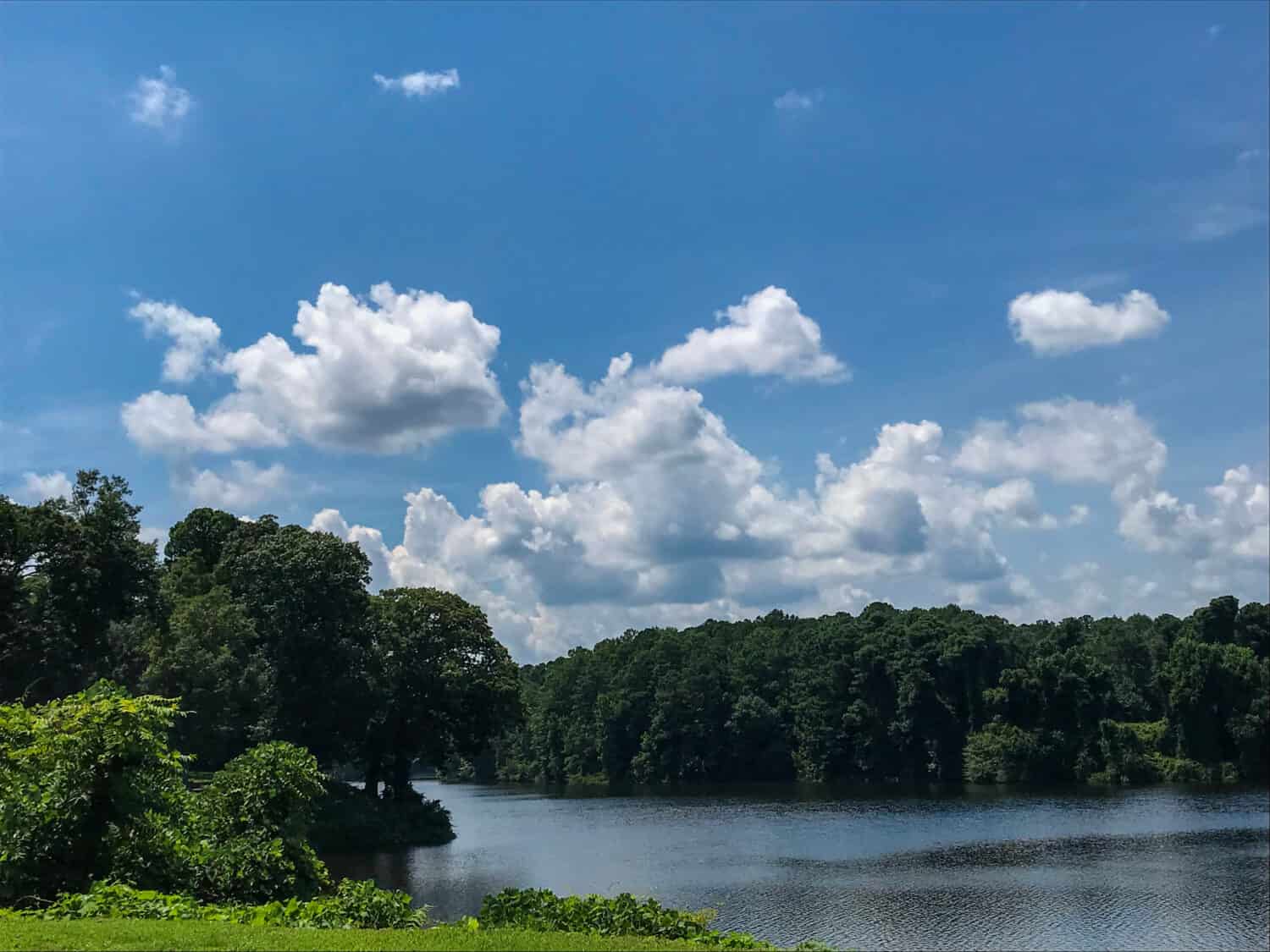Located in southeastern Virginia, Suffolk is known for its diverse landscapes, historical significance, and unique climate. As one of the hottest places in Virginia, Suffolk experiences warm summers and mild winters, making it an interesting destination for both residents and visitors.
History of the Hottest Place in Virginia
The history of Suffolk dates back to the early 17th century when English settlers established the town of Constance on the Nansemond River. Over the years, the town underwent several name changes, including Constant’s Warehouse, before officially becoming known as Suffolk in 1808. The city’s strategic location along waterways facilitated trade and commerce, making it an essential port for the transportation of goods in the region.
Suffolk played a vital role during the American Revolutionary War and the Civil War. It witnessed significant battles and events that shaped the nation’s history. Today, the city preserves its historical heritage through various museums, historic districts, and landmarks, providing visitors with a glimpse into its rich past. Several historic neighborhoods, buildings, and landmarks stand as a testament to the city’s past. This includes the Riddick’s Folly House Museum, a prominent example of Greek Revival architecture.
In the late 19th and early 20th centuries, Suffolk became known as the “Peanut Capital of the World.” The city’s sandy soil and mild climate provided ideal conditions for growing peanuts, and the peanut industry became a major economic driver for the region. Today, Suffolk continues to celebrate its peanut heritage through the annual Suffolk Peanut Fest.

Suffolk, Virginia, is known for its cultural significance and historical contribution during the Civil War.
©O.C Ritz/Shutterstock.com
Average Temperatures in Suffolk
Suffolk’s climate is classified as humid subtropical, characterized by hot and humid summers and mild winters. The city experiences four distinct seasons, each offering a unique atmosphere. The average temperatures in Suffolk vary throughout the year:
Spring (March to May)
Spring in Suffolk brings milder temperatures, with highs ranging from the 60s to 70s in degrees Fahrenheit (15 – 25˚C). It is a pleasant season with blooming flowers and trees.
Summer (June to August)
Summers are hot and humid in Suffolk, with temperatures soaring into the 80s and 90s in degrees Fahrenheit (27 – 35˚C). Heat index values can reach well over 100˚F (37.8˚C) during heatwaves.
Fall (September to November)
Fall in Suffolk brings cooler temperatures, with highs ranging from the 60s to the 70s in degrees Fahrenheit (15 – 25˚C). It is a delightful time to explore the city’s natural beauty as the foliage changes colors.
Winter (December to February)
Winters are mild in Suffolk, with temperatures ranging from the 30s to 50s degrees Fahrenheit (1 – 10˚C). While snowfall is infrequent, occasional light snow showers may occur.
Weather and Climate in Suffolk
Suffolk’s weather is influenced by its proximity to the Atlantic Ocean and its location within the coastal plain of Virginia. The city experiences a mix of weather patterns, ranging from the warm and sunny days of summer to occasional cold fronts during the winter months.
Summers in Suffolk are characterized by high temperatures, high humidity, and frequent afternoon thunderstorms. These thunderstorms can bring heavy rainfall and gusty winds, providing temporary relief from the intense heat. However, some storms may become severe, causing damage to property and infrastructure.
Winters are generally mild, with occasional cold snaps that can bring freezing temperatures. While snowfall is infrequent, residents may experience occasional winter storms that dust the landscape with a light layer of snow.

Suffolk generally has favorable temperatures during the spring and fall. However, summers can become very hot.
©Matt757/Shutterstock.com
The Hottest Temperature on Record in Suffolk, Virginia
The hottest temperature ever recorded in Suffolk, the hottest place in Virginia, occurred on July 22, 2011. On this scorching day, the mercury climbed to a sweltering 105 degrees Fahrenheit (40.6 degrees Celsius). The intense heat was part of a broader heatwave that affected the eastern United States during the summer of 2011. This heatwave caused severe heat-related health concerns and stressed local infrastructures.
Heatwaves and Extreme Heat Events in Suffolk
Being the hottest place in Virginia, Suffolk experiences occasional heatwaves and extreme heat events, particularly during the summer months. Heatwaves are prolonged periods of excessively hot weather, often accompanied by high humidity levels. During these events, temperatures can remain elevated for several days or even weeks, leading to increased heat-related health risks.
Local authorities and health agencies take proactive measures to protect residents during heatwaves. This includes setting up cooling centers, issuing heat advisories, and providing information on heat safety. Residents are encouraged to stay hydrated, limit outdoor activities during peak heat hours, and check on vulnerable individuals, such as the elderly and those with pre-existing health conditions.
The 2011 Heatwave
The summer of 2011 brought one of the most severe and memorable heatwaves to Suffolk, Virginia, and the entire eastern United States. Lasting for several weeks, this heatwave was part of a larger phenomenon that affected much of the country, resulting in record-breaking temperatures and soaring heat indices.
During this heatwave, Suffolk experienced an extended period of excessively high temperatures, with daily highs regularly reaching the upper 90s and triple digits degrees Fahrenheit (mid to upper 30s in degrees Celsius). The nighttime offered little relief, with overnight lows only dropping to the 70s Fahrenheit (around 25˚C), exacerbating the discomfort and potential health risks for residents.
The intense heat and humidity during the 2011 heatwave posed significant health concerns, particularly for vulnerable populations such as the elderly, young children, and individuals with pre-existing health conditions. Heat-related illnesses, including heat exhaustion and heatstroke, surged, prompting health authorities to issue heat advisories and urge residents to take precautionary measures.
The 1995 Heatwave
In the summer of 1995, Suffolk and the surrounding regions experienced another notable heatwave that brought extreme temperatures and oppressive humidity. This heatwave, which lasted for several days, pushed daytime highs well into the mid to upper 90s Fahrenheit (around 35˚C) and caused heat index values to soar above 100 degrees Fahrenheit (37.8˚C).
During this event, the high heat and humidity placed a significant strain on the city’s infrastructure. Air conditioners ran continuously, leading to increased energy demand and power outages in some areas. Public facilities, such as cooling centers and community pools, saw an influx of residents seeking relief from the stifling heat.
The 1980 Heatwave
The summer of 1980 brought an unprecedented heatwave to Suffolk, with temperatures soaring to record levels. During this extreme event, the city experienced a prolonged period of intense heat, with consecutive days of triple-digit temperatures (above 100˚F or 37.8˚C).
The 1980 heatwave took a toll on agriculture and local ecosystems and created drought conditions and water shortages. Crops withered under the relentless sun, and water resources dwindled, affecting both residents and wildlife. Wildlife seeking refuge from the heat found their habitats strained, leading to potential disruptions in the local ecosystem.

Suffolk can experience extremely hot days during the summer, including heatwaves.
©Kate Scott/Shutterstock.com
Effects of Hot Temperatures in Suffolk, Virginia
Heatwaves in Suffolk and other parts of Virginia can have wide-ranging consequences, impacting various aspects of life in the city.
Health Impacts Due to Hot Temperatures in Virginia
Prolonged exposure to extreme heat can lead to heat-related illnesses, ranging from heat exhaustion to life-threatening heatstroke. The elderly, young children, and individuals with certain medical conditions are particularly vulnerable during heat waves.
Infrastructure Strain Due to Hot Weather in Virginia
Heatwaves put increased stress on infrastructure, including power grids, air conditioning systems, and water resources. The high demand for energy and water during extreme heat can lead to power outages and water shortages.
Economic Costs Due to Hot Temperatures in Virginia
Heatwaves can result in increased healthcare costs, lost workdays due to heat-related illnesses, and reduced agricultural productivity. The economic burden of extreme heat events can be significant for both individuals and local governments.
Impact on Wildlife Due to Hot Temperatures in Virginia
Heatwaves can disrupt the natural behaviors and habitats of wildlife, leading to potential shifts in population dynamics and ecological imbalances.
Reduce Impacts of Hottest Temperatures in Virginia
To reduce the impacts of heatwaves in Suffolk, it is essential to implement strategies to reduce the effects of extreme heat. Raise awareness about heat safety measures, particularly for vulnerable populations, and encourage residents to stay hydrated, seek shade, and avoid outdoor activities during the hottest parts of the day.
Governments should promote energy-efficient practices and conservation measures to reduce energy demand during heatwaves and alleviate strain on the power grid. People should implement water conservation strategies to preserve water resources during extreme heat events and drought conditions. By increasing the use of green infrastructure, such as urban parks and tree-lined streets, to provide shade, the urban heat island effect can be reduced in densely populated areas. City planners should also incorporate heat mitigation and adaptation strategies to build resilience against future heatwaves and climate change impacts.
Population of Suffolk, the Hottest Place in Virginia
In September 2021, the population of Suffolk, Virginia, was approximately 95,000 residents. The city’s population has steadily grown over the years, attracted by its favorable climate, historical charm, and economic opportunities. Suffolk’s population comprises a diverse community, contributing to the city’s vibrant culture and unique identity.
The demographics of Suffolk reflect a diverse community, with people from various racial and ethnic backgrounds living together harmoniously. The city has a mix of African American, White, Hispanic, Asian, and other ethnic groups, who contribute to a rich combination of cultures and traditions.
Suffolk boasts a robust education system, with numerous public schools, private schools, and higher education institutions serving the community. The city’s commitment to education and continuous improvement has led to enhanced learning opportunities for students of all ages.
In addition to educational facilities, Suffolk is home to quality healthcare facilities, providing residents with accessible medical services. The city’s healthcare industry is well-equipped to meet the needs of its growing population, ensuring access to quality healthcare services.
Culture and Recreation in Suffolk, Virginia
Suffolk’s residents enjoy a wealth of cultural and recreational opportunities. The city celebrates its history through various museums, historical sites, and events, fostering a sense of pride and connection to the past.
The people of Suffolk are actively engaged in their community, participating in various civic and social organizations. Community events and festivals further promote a sense of unity and solidarity among residents.
Volunteerism is also an essential aspect of Suffolk’s community life, with residents dedicating their time and effort to support local causes and initiatives. This spirit of community engagement and collaboration enhances the overall quality of life for all residents.
Residents also have access to an array of recreational amenities, including parks, trails, and waterways. The Great Dismal Swamp National Wildlife Refuge, located near Suffolk, provides opportunities for outdoor enthusiasts to explore and appreciate the natural beauty of the region.

Turtles and other reptiles enjoy the weather in Suffolk, Virginia, and call it their home.
©Scenic Corner/Shutterstock.com
Wildlife in Suffolk
Suffolk’s diverse landscapes, which include forests, wetlands, and waterways, provide a habitat for a variety of wildlife species. The city’s proximity to the Great Dismal Swamp National Wildlife Refuge further enhances its biodiversity. Some of the wildlife that thrives in Suffolk include:
Birds
Suffolk is a haven for birdwatchers, with a plethora of bird species gracing its skies and waterways. The city’s diverse habitats, including wetlands, forests, and bodies of water, attract migratory birds during their seasonal journeys. Birdwatchers can spot majestic raptors such as bald eagles and ospreys soaring overhead. Great blue herons, kingfishers, and various songbirds are commonly seen near water bodies. In the wetlands, visitors might catch a glimpse of the elusive prothonotary warbler or the vibrant painted bunting.
White-Tailed Deer
White-tailed deer are a common sight in Suffolk, as the city’s woodlands and green spaces provide ample food and shelter for these graceful creatures. Residents often encounter deer grazing in open fields or crossing roads, especially during dawn and dusk. Suffolk’s deer population contributes to the area’s natural biodiversity and serves as a reminder of the city’s rural charm.
Raccoons
Raccoons are opportunistic creatures that have adapted well to urban environments. Residents in Suffolk may occasionally spot these nocturnal mammals rummaging through garbage cans or wandering through neighborhoods in search of food. Raccoons play an essential role in the ecosystem, helping to control insect and rodent populations.
Eastern Box Turtles
Eastern box turtles are native to Suffolk and can be found in various habitats, including forests and grasslands. These terrestrial turtles are easily recognizable by their distinctive domed shell and bright colors. Suffolk residents might come across these slow-moving reptiles during warm weather, as they bask in the sun or forage for food on the forest floor.
Fish
Suffolk’s waterways, including the Nansemond River and Lake Drummond in the Great Dismal Swamp, provide habitat for various fish species. Anglers can try their luck catching largemouth bass, catfish, sunfish, and more. Additionally, these water bodies attract various bird species, creating a dynamic ecosystem that benefits both aquatic and avian wildlife.

Barred owls also call Suffolk, Virginia, their home.
©Daniel J. H. McDonald/Shutterstock.com
Reptiles and Amphibians
Suffolk is home to a diverse array of reptiles and amphibians. Snakes such as the eastern rat snake and the eastern king snake can be found in the city’s woodlands, contributing to pest control by preying on rodents. Amphibians like the American bullfrog and green frog are commonly heard singing their melodious calls near water bodies during the warmer months.
Butterflies and Insects
Suffolk’s gardens and green spaces attract an array of butterflies and insects, making it a paradise for insect enthusiasts. From monarch butterflies to swallowtail butterflies, these delicate creatures bring a splash of color to the city’s landscapes. Pollinators such as bees and butterflies play a crucial role in supporting plant diversity and ecosystem health.
Conservation Efforts Against Hot Temperatures in Virginia
To protect and preserve the diverse wildlife in Suffolk, various conservation efforts are in place. The Great Dismal Swamp National Wildlife Refuge, which borders Suffolk, serves as a significant conservation area, providing a sanctuary for a variety of plant and animal species. Local organizations and authorities work together to conserve natural habitats and promote responsible land use practices that benefit wildlife.
Suffolk, Virginia, stands as one of the hottest places in the state, with warm summers, mild winters, and a fascinating history. As a city with a growing population and diverse wildlife, Suffolk’s unique climate and natural beauty make it a captivating destination for residents and visitors alike. By understanding and appreciating the city’s climate, history, and wildlife, we can foster a deeper connection with this vibrant community and support its continued growth and conservation efforts.
Where Is Suffolk, Virginia, Located on a Map?
Suffolk is one of the seven cities in the Hampton Roads metropolitan area that also includes Chesapeake, Hampton, Newport News, Norfolk, Portsmouth, and Virginia Beach. Suffolk is less than 20 miles southwest of Norfolk. It is 83 miles southeast of Richmond, the state capital.
The photo featured at the top of this post is © Kate Scott/Shutterstock.com
Thank you for reading! Have some feedback for us? Contact the AZ Animals editorial team.







